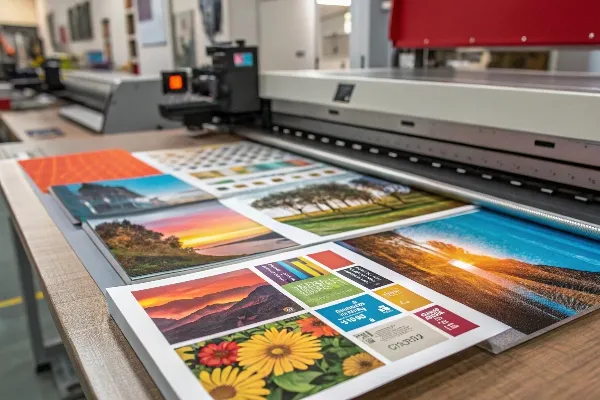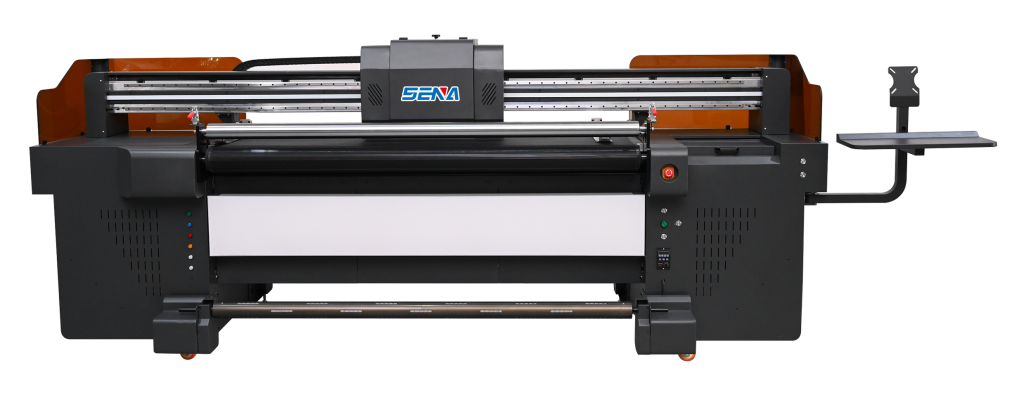



Evite que su consulta se retrase en la respuesta, ingrese su WhatsApp/WeChat/Skype junto con el mensaje, para que podamos comunicarnos con usted lo antes posible.
Le responderemos en un plazo de 24 horas. Si es un caso urgente, agregue WhatsApp: +8617888313102, o WeChat: +86 17864107808. O llame +86 17864107808 directamente.
*Respetamos su confidencialidad y toda la información está protegida. Solo utilizaremos su información para responder a su consulta y nunca le enviaremos correos electrónicos no solicitados ni mensajes promocionales.
Los plazos se reducen mientras crecen los archivos de los clientes. Lento o poco fiable impresoras y plotters destrozar presupuestos y reputaciones. Una prueba impresora de gran formato ofrece colores intensos, velocidades más rápidas y un servicio sólido que se adapta a sus necesidades.
Un proveedor de gran formato fiable suministra la impresora, el sistema de tinta y la asistencia adecuados para cumplir todas las especificaciones gráficas sin disparar el presupuesto. A continuación aprenderá qué modelos, tintas y garantías son los más importantes, para que pueda comprar una vez e imprimir durante años.
A impresora de gran formato-a veces llamado impresora de gran formato-Imprime gráficos de hasta 64 pulgadas de ancho en rollos u hojas rígidas. A plotter tradicionalmente dibuja líneas vectoriales para documentos técnicos o planos CAD. Moderno impresoras y plotters ahora se fusionan: el mismo impresora de inyección de tinta puede imprimir planos arquitectónicos con una anchura de 36 pulgadas y luego cambiar a pancartas a todo color.
Los dispositivos de gran formato utilizan piezoeléctricos o térmicos cabezales de impresión que disparan gotas microscópicas de tinta-ecosolvente, pigmento o tinta de látex-sobre papel estucado, vinilo o textil. En la actualidad alta calidad alcanzan los 2400 ppp, satisfaciendo tanto a estudios fotográficos como a empresas de ingeniería.

| Tipo de tinta | Mejor para | Ventajas | Contras |
|---|---|---|---|
| Ecosolvente | Exterior Señalizaciónrotulación de vehículos | Flexible, resistente a los arañazos | Mayor tiempo de desgasificación |
| Látex | Interior y exterior banner trabajo | Sin olor, secado instantáneo | Consumo de energía ligeramente superior |
| Pigmento | Bellas artes y pruebas | Archivo, amplia gama de colores | Requiere soportes revestidos |
Roland DG popularizó el ecosolvente con su VersaStudio BN2, mientras que HP impresoras de látex dominar los expositores de venta al por menor sensibles a los olores. Canon imagePROGRAF y la serie P de Epson aprovechan los 11 colores Lucía y UltraChrome juegos de pigmentos con optimizador de croma para impresiones de calidad de galería. Cómo elegir el sistema de tinta protege tanto la durabilidad de la impresión como la salud del cliente.
La velocidad se mide en pies cuadrados por hora. Las unidades de entrada alcanzan los 140 ft²/h; los equipos industriales superan los 1.000 ft²/h. El rendimiento más rápido viene de:
Sin embargo, aumentar la velocidad puede marcar pendientes. Los vendedores que incluyen a bordo pantalla táctil permiten pasar de alta velocidad borrador a color intenso instantáneamente, ideal cuando hay prisa. Señales y gráficos llega el pedido.

A impresora de superficie plana mantiene inmóvil el cartón de espuma rígida o las planchas de PVC, eliminando la desviación de alimentación habitual en los trabajos con bobinas. Esto aumenta calidad de impresión sobre pesado sustrato como los rótulos acrílicos. Sin embargo, el rollo a rollo destaca banner carreras. Los sistemas híbridos añaden mesas desmontables para que una máquina de impresión se encarga de ambas cosas.
Consejo profesional: Si el 40 % de sus ingresos procede de rótulos de jardín para inmobiliarias, una impresora de gran formato puede amortizarse en 18 meses.
A las pequeñas empresas gráficas les encanta BN2 y VersaStudio líneas para su pequeña huella y un rendimiento de 20 ft²/h. Ahorros clave:

Utilice nuestro guía del comprador básico de gran formato para calcular la rentabilidad del alquiler mensual frente a la compra directa.
Paquete de proveedores espectrofotómetros o enlace a dispositivos X-Rite i1. Las cartas de colores automatizadas imprimen, secan y escanean, actualizando los perfiles ICC en el software RIP. Resultado: los azules corporativos permanecen idénticos tanto si se imprimen en película retroiluminada como en algodón. Impresión textil.
Nuestro tutorial de gestión del color muestra cómo bloquear Delta-E bajo 2 a través de un amplia gama de medios
¿Con qué frecuencia debo sustituir los cabezales de impresión?
La mayoría de los cabezales duran entre 2 y 3 litros de tinta; las estaciones de taponado integradas y la limpieza periódica de los inyectores prolongan su vida útil.
¿Se puede imprimir con tinta látex sobre papel no estucado?
Sí. El látex activado por calor se adhiere al pegamento normal, por lo que es ideal para dibujos técnicos.
¿La tinta pigmentada es resistente al agua?
El pigmento es resistente al agua, pero necesita laminación para durar más de dos años en exteriores.
¿Qué resolución de archivo es la mejor para carteles de 36 pulgadas?
150 ppp en el tamaño final equilibra el detalle y la velocidad RIP.
Visite impresoras de gran formato ¿Apoyar la personalización?
Las herramientas de datos absolutamente variables le permiten imprimir códigos QR o nombres únicos en cada hoja.